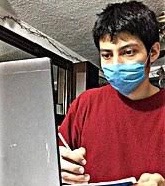UMASS UPDATES COVID-19 PROTOCOLS FOR RETURNING STUDENTS

Photo: commons.wikimedia
Source: UMass News and Media
UMass Amherst has established new requirements for the use of face coverings on campus. The new requirements were announced on Wednesday (7/29) in a memo from Jeffrey Hescock, Executive Director of Environmental Health and Safety at UMass.
All individuals must now wear face coverings indoors in nearly all circumstances as well as outdoors where social distancing is not possible.
The small set of instances where face coverings are not required are:
- In personal offices while alone
- In research spaces while alone
- In residence hall rooms while alone or with a roommate
- Outdoors where it is possible to always maintain six feet between yourself and others
- For children under the age of 2
- For anyone with a medical condition that prevents the use of a face covering
The updated requirements are being implemented after a review of the most recent scientific evidence. The CDC has reaffirmed that universal use of face coverings is a critical tool in mitigating the spread of COVID-19 in communities. Face coverings are a form of source control and prevent the wearer from generating droplets that could be infectious to others, either directly when in close contact, or through surface contamination. This is particularly important to mitigate the spread of COVID-19 from asymptomatic and pre-symptomatic carriers who are not aware they are infectious, and when other public health measures such as social distancing are not possible. Consistent and comprehensive use of face coverings is an essential aspect of the university’s comprehensive public health guidance that includes daily symptom checking, hand washing, social distancing, use of face coverings and cleaning.
Where and When to Wear a Face Covering
- Face coverings are required in nearly all indoor spaces, including:
• Hallways
• Elevators
• Restrooms
• Break rooms
• Entries and exits to buildings
• Classrooms
• Meeting rooms
• Shared offices and work areas
• In residential hall rooms with friends (non-roommates) - Face coverings are required outdoors where social distancing is not likely to be maintained at all times, including:
• During class changes
• In any other situation where six feet of distance from yourself and others cannot be maintained for any length of time - Face coverings are required on public transportation such as buses.
Best Practices
- Wear face coverings even when social distancing is possible. Face coverings should be combined with social distancing whenever possible.
- Always keep a face covering with you and ready to wear when needed. Have a back-up face covering with you to replace face coverings that become soiled.
- Face coverings should fit snugly, but comfortably against the side of the face
- Wash your hands often, especially after removing a face covering. Use hand sanitizer after removing face coverings if hand washing is not possible.
- Wash your cloth face coverings daily or when soiled.
Due to the COVID-19 pandemic, associated public health regulations and the university’s response to this public health crisis, the university cannot exempt individuals from the requirement to wear a face covering in areas where public health guidelines require that they be worn.
Notwithstanding the foregoing, the university understands that in the absence of a facial mask exemption, students and employees may need additional accommodations or support. Accordingly, the university is continuing to actively engage with those for whom wearing a mask is partially or completely prohibitive, in an effort to find reasonable alternative accommodations. Students and employees are encouraged to contact the Disability Services Office (students) and the Office of Workplace Accommodations (employees) for assistance. Additional guidance will be forthcoming as it becomes available.
The university is the process of updating and posting signage on campus to reflect these updated face covering requirements.
Additional information about COVID-19 protocols for returning students can be found here, here and here.
